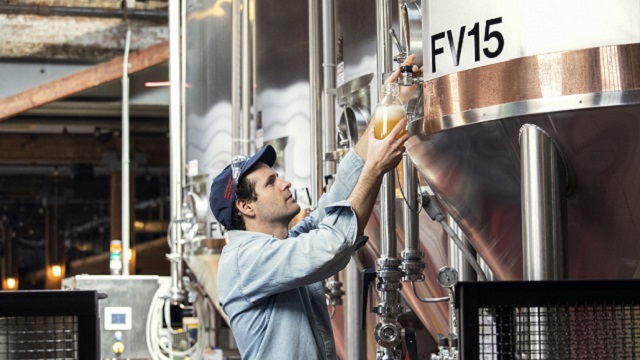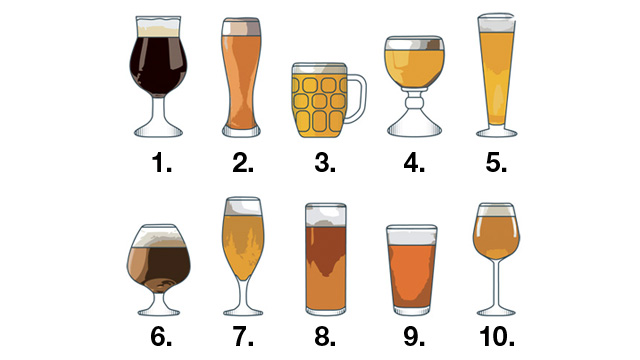2021-07-12 Product news
North America's craft beer market trends
Brewers face the challenges of adapting their processes to local tastes and changing consumer trends. Whatever the requirements, Alfa Laval has the equipment to support them.
Given long-term declining beer sales in Europe and Japan, and stagnation in North America, breweries have moved in two directions: toward growing markets such as Asia, South America and Sub-Saharan Africa and to healthier sub-sections of the market, such as craft and non-alcoholic beer.
Brooklyn Brewery in New York is adopting both directions, while pursuing its growth.
For many years at the forefront of the craft beer revolution in the United States, Brooklyn Brewery now exports most of their production compared to any craft beer manufacturer.
Kyle Wilson, Project Manager and Development of the Brooklyn Brewery, explains why they consider both innovative products and overseas markets.
"Right now, most U.S. breweries have exhausted all known classic craft beer styles, so some of them are focusing on style guides and experimenting more," says Wilson. It indicates the bitter and unfiltered IPA categories and experiments with wild Brettanomyces yeasts and Lactobacillus bacteria, which have long given Belgian lambic beer its sour taste.
The double-digit increase in craft beer in the US over the past decade appears to be moderating, with consumption rising by just five percent in 2017, according to the US Beer Producers Association.
It is understandable that Brooklyn Brewery, while continuing to develop beers for the domestic market, accepts the challenge of looking abroad, where preferences can be radically different.
"In warmer climates, they tend not to support beers aged in oak barrels," he points out.
"In places like Brazil, Porter will not be drunk as much as in a place with a cold winter climate."
The other difference is the position of a country, on what Wilson calls the "trajectory of craft beer." "Some of these markets are only moving towards the rebirth of craft beer, while in the US we are far on this journey, so we have gone through certain styles and are moving towards progressive things like sour beers and really bitter IPAs.
The use of alternative beers in Japan
In Japan, craft beer and micro-breweries have existed since the liberalization of the industry in the 1990s.
However, according to Yuichi Nakamura, manager of the Production Technology Center for Japanese giant Asahi, the domestic market has gone as far as possible.
"I think the market for craft beer is now saturated. The total market share for craft beer is less than 1% in Japan and I don't think it will ever exceed one percent. " he says.
Asahi pursues aromatic beers and non-alcoholic beverages as a means to continue its success in the domestic market. "We produce a cherry-flavored beer, which we have promoted as suitable to accompany meat, such as wine," says Nakamura. "We used to make a chocolate beer, which we promoted as suitable as a drink with chocolate: a special artisanal chocolate."
Non-alcoholic “beer-based beverages” began to gain ground in Japan more than a decade ago, and Asahi - which launched Asahi Dry Zero in 2012 - continues to be a leader among flavored beverage manufacturers in Japan. non-alcoholic beer base from Japan.
Instead of eliminating alcohol from beer as part of the brewing process, the recent Japanese tradition involves producing flavored non-alcoholic beer-based beverages, such as soft drinks, with the addition of a special flavor to give them a taste. beer-like. So far, no Japanese brewer has started producing a non-alcoholic beer.
Explorations of history
In search of innovation, some breweries are looking for their past. At the Nuovo brewery near Bergamo, in northern Italy, Heineken has launched a category of "special beer" under the Birra Moretti brand, including IPA Moretti "a beer that goes back to the IPA tradition".
They also developed Le Regionali, a beer line designed to capture the regional characteristics of Italians, with five varieties that reflect five regions of the country.
Moreover, it addresses the environmental concerns of Italians with Baffo D'Oro, which is produced using electricity generated by solar panels on the roof of the brewery.
Giuseppe Mele, the director of the brewery, is proud of these developments, stating that, “despite being the largest brewery in Italy, Comun Nuovo has once again proved to be able to respond to changes in the market in a agile and versatile and confirm itself as a center of innovation, even for niche products. ”
Tags
All
Meet our Experts
Talk to Canadian Experts
+1 888 253 2226  Alfa Laval's Canadian Expert in
Alfa Laval's Canadian Expert in
Brewery Technology/Equipment, is Martin Ivanov, P.Eng. Ext. 343
Email Martin a question at Martin.Ivanov@alfalaval.com
DID YOU KNOW THAT
- Beer is the third-most popular dink on earth, after water and tea.
- Zythology is the scientific name for the study of beer and brewing, including how specific ingredients affect the brewing process.
- Yeast can only survive alcohol concentrations of 14 percent to 10 percent.
- After Danish scientist Niels Bohr won the Nobel Prize in 1922, the Carlsberg brewery provided him a continuous supply of beer piped directly to his house.
- In 13th century Norway, it wasn't uncommon for people to baptize their children with beer.
- In Japan, cans of beer feature writing in braille so blind people don't confuse them with non-alcoholic drinks.
- The world's oldest continuously operating brewery is at the Weihenstephan Abbey in Bavaria, Germany, where monks started brewing beer in 1040 AD.
PRODUCT - Brew series
- Centrifugation provides breweries with swift beer clarification with no loss of aroma
- Increased clarification capacity: reduced fouling of filters with preclarification
- High efficiency beer separation enables quicker turnover of fermentation tanks
- Reduced product losses: beer centrifugation results in more concentrated solids compared to gravity settling
- Patented beer brewing equipment and hermetic design leads to low to zero oxygen pick up
Different types of beer - and their preferred glassware.
While there's certainly a visual element to consider with beer glassware, it can make a difference in your enjoyment of the brew as well. Here's a list of some different types of beer - and their preferred glassware. 1. Double stout 2. Weissbier 3. English bitter 4. Tripel 5. Pilsner 6. Belgian dark ale 7. Biére brut, biére de Champange 8. Gueuze 9. Brown ale 10. Saison

